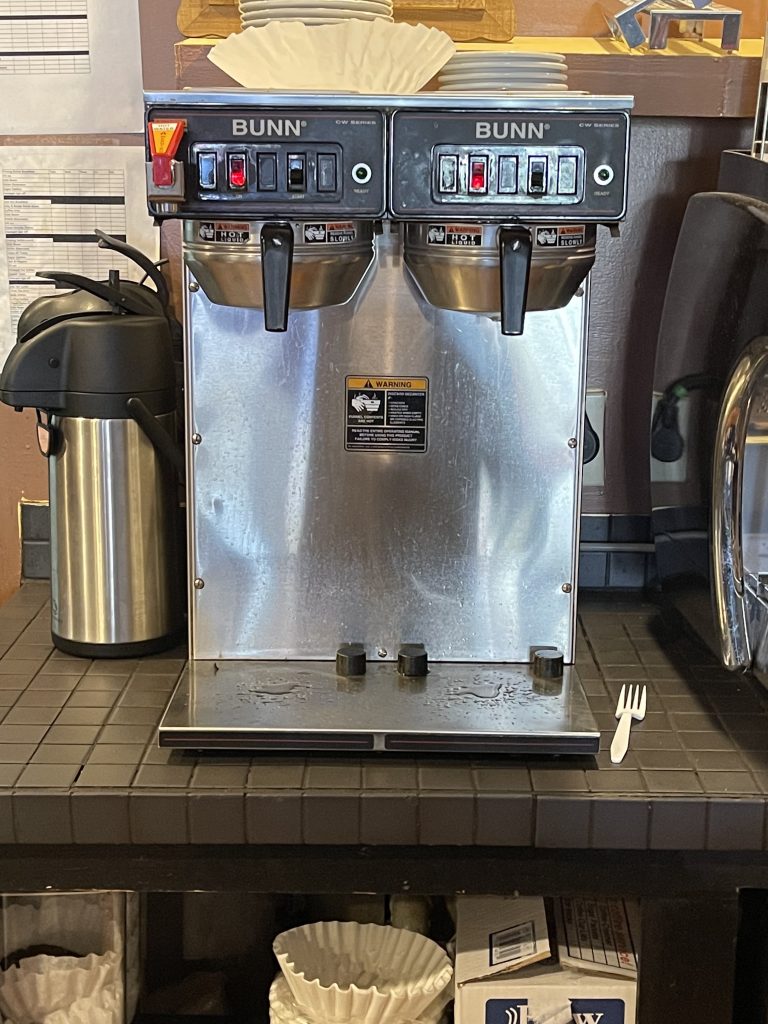Would you like a little sugar or cream with your coffee or tea? Or how about a small dash of microplastics, too? I’d never thought of this possibility until my 10-year-old coffee pot died and I had to replace it. After all these years of drinking coffee, I’d never examined the inside makings of my coffee maker. As I was throwing it out, I suddenly realized that my hot water was boiled in plastic and my coffee was being brewed through plastic. So I began shopping for a coffee pot that had stainless steel in both of these places.
My tea was made in this same coffee pot. After I got my new stainless steel coffee percolator, I began brewing my tea in a stainless steel pot on the stove. Then one day in a restaurant, I ordered hot tea and I noticed that the tea bag it was brewed in was made of plastic!
Nathalie Tufenkji, a chemical engineer and researcher wondered the same thing when she noticed that her tea bag was made of plastic mesh as she lowered it into the hot water. As a professor of chemical engineering at McGill University in Canada, she wondered what happened to the plastic mesh as it soaked in the hot water. So she decided to use her research skills to find out.
Her research is now published in Environmental Science and Technology. Her research revealed that steeping a single plastic teabag at brewing temperature (95 degrees C) released approximately 11.6 billion microplastics and 3.1 billion nanoplastics into a single cup of the beverage. Wow!
My mind immediately went back to my old coffee pot—the fact that it was boiling the water in plastic and brewing through plastic to collect in my glass container. I felt much safer after buying my Cuisinart stainless steel coffee percolator.
Then I started thinking about the individually brewed one cup Keurig coffee makers where the coffee is brewed through a plastic container. Plastics everywhere—oh my! And hot water and heat increase the leaching of plastics.
But never fear—a better way is here. Here are several ways to remedy this problem.
Buy a coffee pot that boils and brews in stainless steel.
It should also store the coffee in glass or stainless steel. Remember this the next time your coffee pot dies. Replace with a cleaner brewing machine. See my percolator in the picture below.
Only use paper mesh tea bags or loose tea in a stainless steel steeping ball to brew tea.
It’s the plastic mesh that is causing the problem, not the tea itself. Many teas contain nourishing antioxidants and are good for you. See steeping balls below.
Use Keurig pods that contain paper mesh rather than plastic.
You can still use your Keurig—just buy different pods! Below is a picture of a healthier pod that can be used.

Some companies are making coffee pods with paper mesh rather than plastic that work in most K-cups. This one is by Organic Coffee Company.
Use a steel pot to heat your hot water for your tea.
I use to heat my water in the microwave, but now I heat it just as quickly in an electric steel water boiler that boils water in just a few minutes. And if you do boil water for tea in the microwave, it should be in a ceramic mug. Here’s my steel water boiler. I use it daily.
Don’t worry about restaurants.
Almost all restaurants brew their coffee and tea in stainless steel and store in glass or steel containers. they may be doing this for taste, but as a result, you’re not getting microplastics.

Stainless steel brewing and storage in glass or stainless steel containers is the norm in the restaurant industry.
Avoid drinking hot beverages from styrofoam cups.
If a restaurant only has styrofoam to-go cups, make a note to bring your own steel or ceramic cup when you want a to-go cup. This is what the Europeans have been doing for years. At home, only drink from treated glass cups, ceramic, or steel. Paper cups designed for hot beverages are great. If you notice, Chick-Fil-A and Starbucks only use these for your coffee. In addition, avoid using those plastic tops on your paper cups. When the steam from the hot beverage rises, plastics get into your drink.
I hope this information hasn’t ruined your day. I always like to give practical solutions. Thankfully, there are practical solutions for lowering our exposure to plastics in this day. We can drink our tea and coffee with a little sweetener and cream and leave off the dash of plastics! This is something our ancestors never had to worry about.
Does anyone else have practical suggestions in this area? Next week, we’ll look at why lessening your plastics is key to good health.
For Your Health,
Ginny
 Ginny Dent Brant is a speaker and writer who grew up in the halls of power in Washington, DC. She has battled cancer, ministered around the world, and served on the front lines of American culture as a counselor, educator, wellness advocate, and adjunct professor. Brant’s award-winning book, Finding True Freedom: From the White House to the World, was endorsed by Chuck Colson and featured in many TV and media interviews. Unleash Your God-Given Healing: Eight Steps to Prevent and Survive Cancer was released in May 2020 after her journey with cancer and was recently awarded the First Place Golden Scrolls Award for Memoirs, and Second Place in both Selah Awards for Memoirs and Director’s Choice Award for Nonfiction at the Blue Ridge Mountain Christian Writer’s Conference. It recently received the Christian Authors Network’s (CAN) Gold Award for Excellence in Marketing for reaching 62.5 million people with a message of cancer prevention and survival. It was written with commentary from an oncologist and was featured on CBN’s Healthy Living Show, Atlanta Live, and CTN’s Homekeepers along with over 75 media outlets. Learn more and cancer and wellness prevention blog and book information at www.ginnybrant.com.
Ginny Dent Brant is a speaker and writer who grew up in the halls of power in Washington, DC. She has battled cancer, ministered around the world, and served on the front lines of American culture as a counselor, educator, wellness advocate, and adjunct professor. Brant’s award-winning book, Finding True Freedom: From the White House to the World, was endorsed by Chuck Colson and featured in many TV and media interviews. Unleash Your God-Given Healing: Eight Steps to Prevent and Survive Cancer was released in May 2020 after her journey with cancer and was recently awarded the First Place Golden Scrolls Award for Memoirs, and Second Place in both Selah Awards for Memoirs and Director’s Choice Award for Nonfiction at the Blue Ridge Mountain Christian Writer’s Conference. It recently received the Christian Authors Network’s (CAN) Gold Award for Excellence in Marketing for reaching 62.5 million people with a message of cancer prevention and survival. It was written with commentary from an oncologist and was featured on CBN’s Healthy Living Show, Atlanta Live, and CTN’s Homekeepers along with over 75 media outlets. Learn more and cancer and wellness prevention blog and book information at www.ginnybrant.com.







